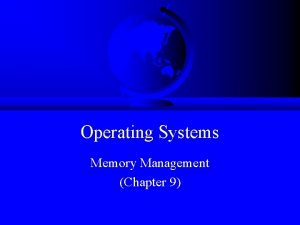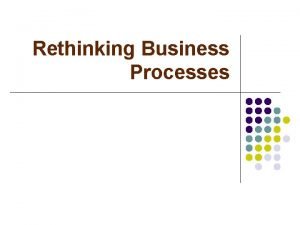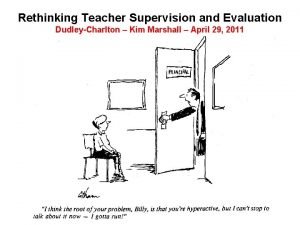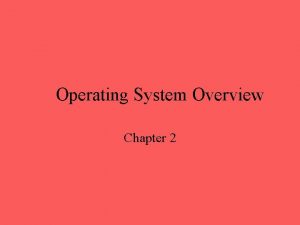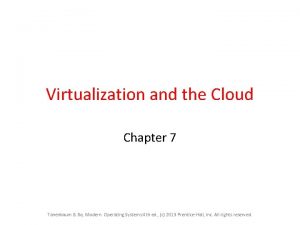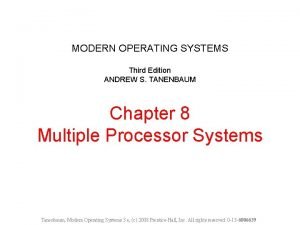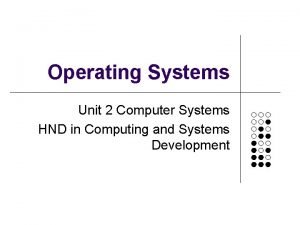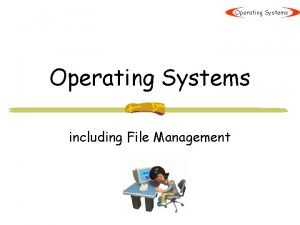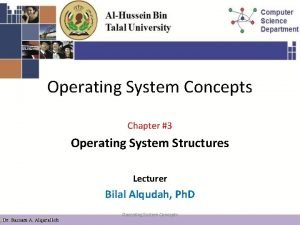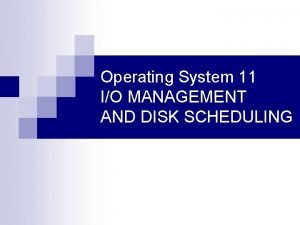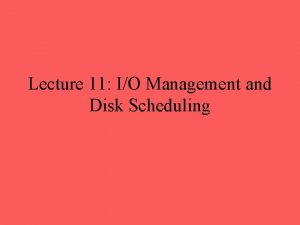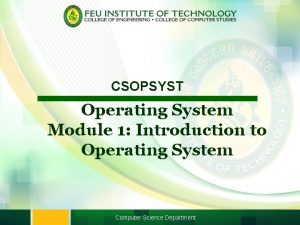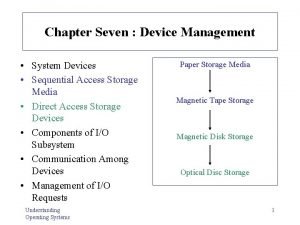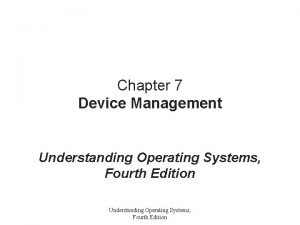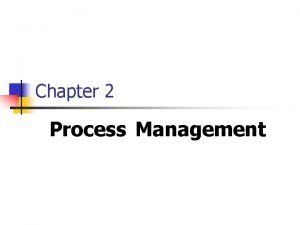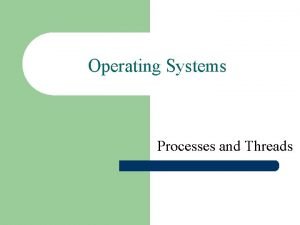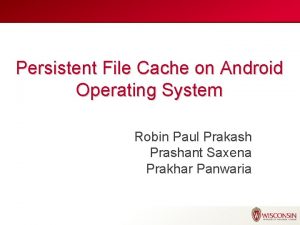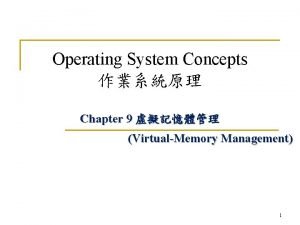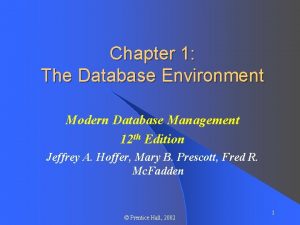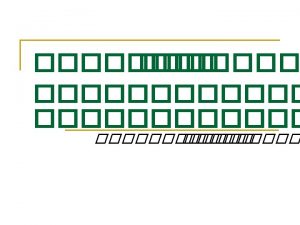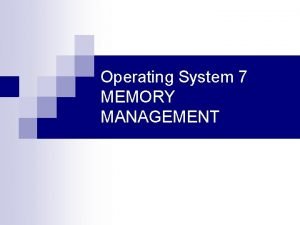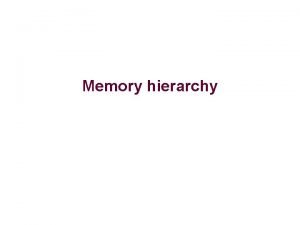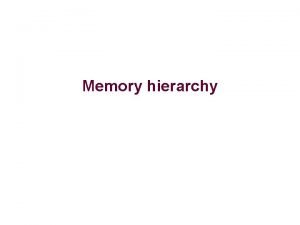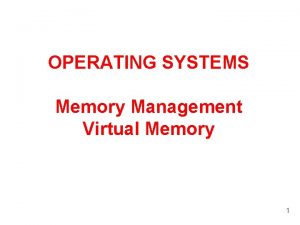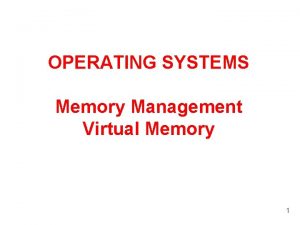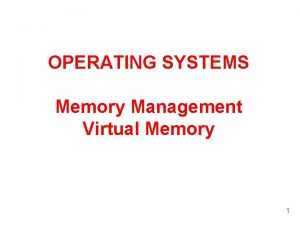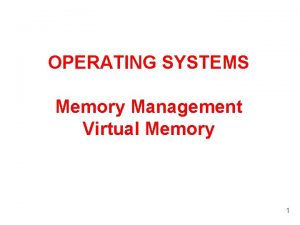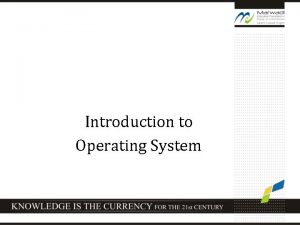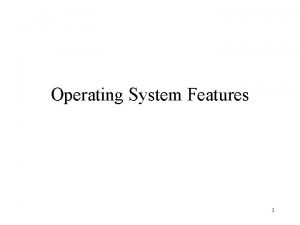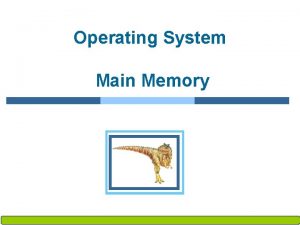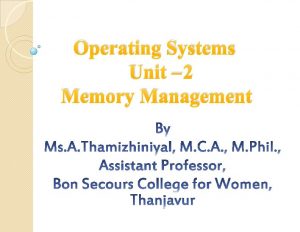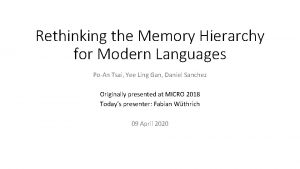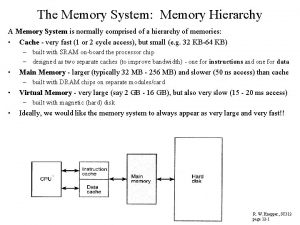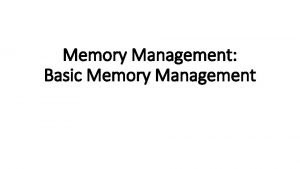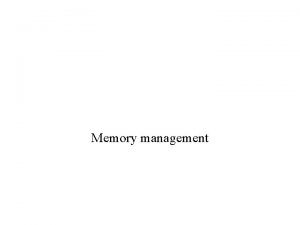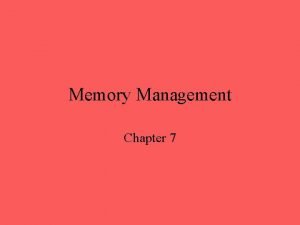Rethinking Memory Management in Modern Operating System Memory





![The Performance Lost -- Caused by Inter-thread Interferences • Shared cache[Zhuravlev+, ASPLOS 10] – The Performance Lost -- Caused by Inter-thread Interferences • Shared cache[Zhuravlev+, ASPLOS 10] –](https://slidetodoc.com/presentation_image_h2/6880bde5a313e9d58b074619009ab95a/image-6.jpg)







































- Slides: 45

Rethinking Memory Management in Modern Operating System — Memory optimization using hardware features and application characteristics Lei Liu (SKL, ICT, CAS) Talk in Huawei U. S. C. A 2015, 7, 30

Executive Summary • Background & Motivation • Topic 1: Optimization Memory System by OS Approach • Topic 2: Going Vertical! • Topic 3: SYSMON: Making OS understand it! • Topic 4: Our on-going work (if time permits)

Background & Motivation

Organization of shared memory system Core 0 Core 1 Core 2 . . . Core N Shared Memory System Shared Cache Memory Controller On-chip Off-chip Chip Boundary DRAM Bank 0 DRAM Bank 1 DRAM Bank 2 . . . DRAM Bank K

Interferences on DRAM Banks -- DRAM Conflicts Row-Buffer 2 times Thrashing of Row 1: increases latency Bank Memory Latency = N*t. RC (Caused by Row-Buffer Thrashing) + I/O Latency
![The Performance Lost Caused by Interthread Interferences Shared cacheZhuravlev ASPLOS 10 The Performance Lost -- Caused by Inter-thread Interferences • Shared cache[Zhuravlev+, ASPLOS 10] –](https://slidetodoc.com/presentation_image_h2/6880bde5a313e9d58b074619009ab95a/image-6.jpg)
The Performance Lost -- Caused by Inter-thread Interferences • Shared cache[Zhuravlev+, ASPLOS 10] – 50% performance degradation • Shared DRAM[Moscibroda+, Security 06, Onur] – Unfair: 1. 09 x v. s. 11. 35 x – System slowdown: 2. 9 x v. s. 6 x Impact Overall System Performance and Qo. S Seriously!

Topic 1: Optimizing Memory System by OS Approaches -- “Horizontal” Memory Policies Most of the contents are in our PACT-2012 and ACM TACO-2014 Papers.

Page-Coloring Partitioning Approach • Page-coloring technique has been proposed to partition cache. Physical address Frame No. Page Offset Four-way Associativity 00 Cache Set Bits 10 11 Thread 2 Thread 3 Thread 4 Cache Sets 01 Thread 1

Bank bits in PFN • Some bits in Page Frame Number (PFN) denotes the bank address We could extend pagecoloring to partition banks DRAM Banks

Partitioning Banks into Groups • Banks are colored into diff. groups Thread 1 Thread 2 Thread 3 DRAM Banks Reducing the available amount of banks that one thread can access

The necessary bank amount • Will this influence performance? The necessary amount of banks one program requires is limited

Overview of Our Mechanism

Bank-level Partition Mechanism (BPM) • Implementation: adopt page-coloring base BPM in Linux kernel 2. 6. 32 by modifying its buddy system. – group free pages into 32 colors. – Adjust the page allocation algorithm in OS.

Experiment Environment • System Configuration -- 4 -core/8 -thread Intel Core i 7 -860 CPU 2. 8 GHz -- LLC: 8 MB/16 ways of associativity • Memory Configuration -- Micron DDR 3 -1333 -- 2 Channel, 8 Ranks, 64 Banks • Workloads -- 23 benchmarks from SPEC CPU 2006 (Multi-Program) -- PARSEC (Multi-Thread)

Experimental Results • System throughput : 4. 7% (up to 8. 6%) • Maximum slowdown: 4. 5% (up to 15. 8%) • Memory Power : 5. 2% A Software Memory Partition Approach for Eliminating Bank Level Interferences (PACT-2012)

Extend BPM to BPM+ • Reducing the Channel Level interferences “blindly” interleaving BPM+, Let each thread use a specific channel BPM/BPM+: Software-based Dynamic Memory Partitioning Mechanism (ACM TACO-2014)

Overall System Performance

Memory Optimization Framework -- Supporting Dyn. and Flexible Scheduler

BPM/BPM+ and Per-core Bandwidth BPM(+) is promising for future multi-/many-core platforms that have even less per-core bandwidth

In What We Win? • A practical software approach for eliminating Bank-level Interferences -- Without any hardware modification to MC -- Could be deployed on real system easily -- Improves both fairness and system throughput -- Saves energy consumption of memory system

Topic 2: Going Vertical in Memory Hierarchy -- Exploiting the potential optimization space Most of the contents are in our ISCA-2014 and IEEE Trans. on Computers-2015 Papers.

Study the Effectiveness of “Horizontal” Partitioning

“Horizontal” Partitioning: Cache VS. DRAM -- Programs are from SPECCPU 2006 Whether the two horizontal approaches work cooperatively?

Architecture Features in Modern Multicore Systems • B-/C-/O-Bits in Address Mapping The address Mapping of Intel i 7 -860 w/ 8 GB Memory

“Vertical” Partitioning using O-Bits Cache Set Cache Line T 1 T 2 T 3 Last Level Cache DRAM Banks T 4

Partitioning Space in Entire Memory Hierarchy The address Mapping of Intel i 7 -860 w/ 8 GB Memory

The History of Page-Coloring --Cross-layer Cooperative Vertical partitioning

The Performance Gains on Vertical Partitioning

They are in the quadrant ONE How to obtain the workloads’ sensitivity at runtime?

How to Leverage the Potential Optimization Space? -- Combining Application’s Memory Patterns and Hardware Features

What affects Vertical Partitioning? • Cache sensitivity impacts VP LLCH: Last Level Cache High Requirement LLCT: LLC Thrashing LLCM: LLC Middle Requirement CCF: Core Cache Fitting

The Classification of SPECCPU 2006 • Diverse memory features on Cache and DRAM

Data Mining: Classification Best-Fit Partitioning Algorithm: Using APRIORI algorithm to discover A B Modeling:{lib, mcf, bzip, hmmer} {<lib, LLCT>, <mcf, LLCH>, <bzip, LLCM>, <hmmer, CCF>} <cache-only, x%>, <bank-only, y%>, <A/B/C-VP, z%>

Handling Multiplicity by Multi-policy -- Memory Policy Decision Tree Who is “stronger”:LLCT > LLCH > LLCM > CCF

Supporting Partitioning and Coalescing -- Real Case: “Curve-Vertical” Partitioning 2 x. LLCT (e. g. 462. Lib, 4 x. LLCH or LLCM (e. g. mcf, astar. ) causing cache thrashing) *Principle 1*: To isolate LLCT applications since it will interfere other application seriously. *Principle 2*: The number of DRAM Banks one application will use is limited. 15~20% performance benefits, outperforming Cache-/Bank-only “Horizontal” partitioning IEEE Trans. on Computer-2015

Topic 3: SYSMON -- Making OS understand the memory patterns

SYSMON: Cache Utilization, Hot/Cold Page, Memory Footprint • It detects __access_bit in PTE, and then distinguishes “cold” and “hot” pages. • It indicates the max requirements of Cache utility of one thread by counting the number of “hot” pages.

SYSMON: Profiling Page-Level Re-use Time Lower is better

SYSMON: “Locality” and “Hot” Freq. Better Locality Low access Freq.

SYSMON: Random Sampling -- To Handle application with Large Footprint -- Lower sampling overhead, but Similar results. -- Runtime Sampling -- Easy to be developed -- Diverse platforms 5~10% PTE is enough to reflect the memory behavior

SYSMON: Classification based on Sampling Results • Weighted Page Distribution “Locality” WPD= (2 x. VH + 1. 5 x. H +1 x. M + 0. 5 x. L + 0. 1 x. VL) / all_used_pages_num

Let it Run On-the-Fly! -- Multi-Policy Framework: Supporting Diverse Memory Allocating Policies

Experimental Results • Horizontal, Vertical, Random (HVR) Framework outperforms the “Horizontal” Partitioning More experimental results can be found in our paper.

Conclusion • Horizontal and Vertical Partitioning -- Brings up to 21% improvement -- Outperforms the Horizontal partitioning • Closing the “gap” between arch. and OS -- Makes OS take advantages of arch. Features -- Application-Arch. -Aware Memory Management (HVR) • Memory optimization -- We try to approach it from OS angle -- Optimizes the memory allocating/organizing in the root

 Rethinking file mapping for persistent memory
Rethinking file mapping for persistent memory Rethinking file mapping for persistent memory
Rethinking file mapping for persistent memory Memory management operating system
Memory management operating system Rethinking business process
Rethinking business process What is cdio
What is cdio Rethinking the 4 p's
Rethinking the 4 p's Rethinking expertise
Rethinking expertise Rethinking education: towards a global common good?
Rethinking education: towards a global common good? Rethinking teacher supervision and evaluation
Rethinking teacher supervision and evaluation Arxiv
Arxiv What is the fundamental rethinking of business processes
What is the fundamental rethinking of business processes Modern operating systems
Modern operating systems Characteristics of modern operating system
Characteristics of modern operating system Two central themes of modern operating system are
Two central themes of modern operating system are Virtual memory in os
Virtual memory in os Paged segmentation
Paged segmentation Rootkit
Rootkit Modern operating systems 3rd edition
Modern operating systems 3rd edition Modern operating systems tanenbaum 5th edition
Modern operating systems tanenbaum 5th edition Distributed systems third edition
Distributed systems third edition Process management in operating system
Process management in operating system File management in os
File management in os Process management in operating system
Process management in operating system Io management in os
Io management in os What is dual mode in os
What is dual mode in os I/o device management in operating system
I/o device management in operating system Overview of operating systems
Overview of operating systems I/o device management in operating system
I/o device management in operating system I/o device management in operating system
I/o device management in operating system Process management in operating system
Process management in operating system Process and thread management in operating system
Process and thread management in operating system File management in android operating system
File management in android operating system Components of file
Components of file 輾轉現象
輾轉現象 Buddy system memory
Buddy system memory File system in operating system
File system in operating system File system in operating system
File system in operating system File system in operating system
File system in operating system Importance of software project management
Importance of software project management Database management environment
Database management environment Semantic memory example
Semantic memory example Implicit explicit memory
Implicit explicit memory Long term memory vs short term memory
Long term memory vs short term memory Internal memory and external memory
Internal memory and external memory Primary memory and secondary memory
Primary memory and secondary memory Logical address
Logical address


